When it comes to a power steering fluid leak, make sure to drive your car unless you get to the nearest station for replacing the fluid and getting the repair done.
The power steering fluid leak won’t leave you helpless on the side of the road. However, if this leakage problem is not handled timely, it can also wreck the car, causing its repair to be more expensive than you imagined.
Now the question arises, for how many miles a person can drive with the leaking power steering fluid? To get the answer, let’s continue reading it.
Contents
- What Is Power Steering Fluid?
- Power Steering Fluid Leak: Top 4 Reasons To Be Cautious Of
- Miles to Drive With Leaking Power Steering Fluid
- What Can Happen If You Continuously Drive Your Car With Power Steering Fluid Leak
- How To Fix The Power Steering Fluid Leak?
- What Is The Cost To Repair Power Steering Leak?
- Final Words
What Is Power Steering Fluid?
You may wonder why is my power steering fluid leaking and urge to know the answer right away. But before going to know the reasons for a leaking power steering pump and how long you can drive with a power steering fluid leak, let’s find out what is power steering fluid.
Power steering fluid is hugely important to the performance and life of your car. It’s what keeps things smooth and streamlined on the road. Power steering fluid is the hydraulic fluid that transmits the power in your steering system.
In detail, it helps create the pressure that pushes on either side of your car’s rack-mounted piston, allowing you to turn the wheels with ease.
Since the majority of cars today use power-assisted steering (PAS) systems, this fluid is essential for smooth steering.
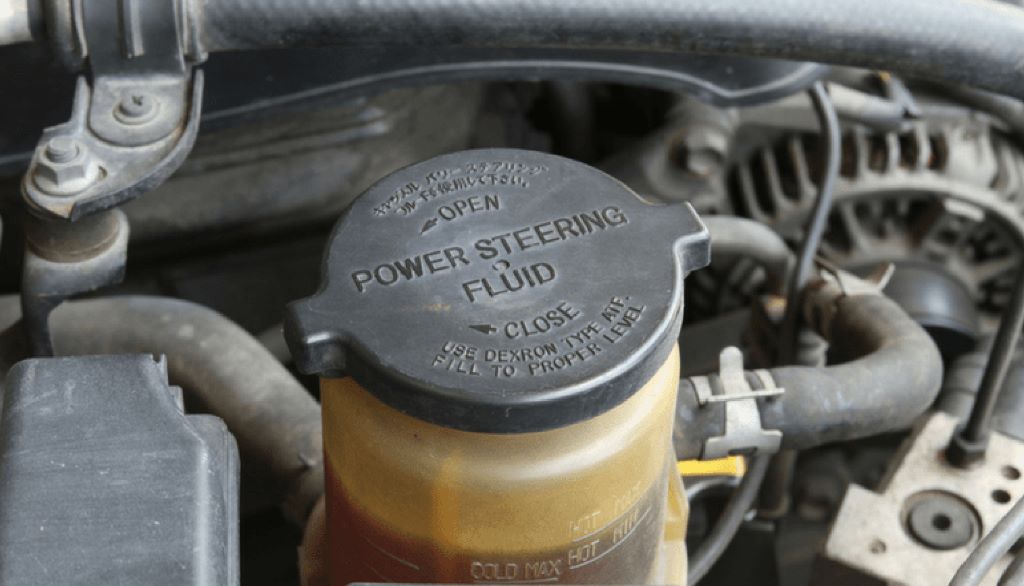
Power Steering Fluid Leak: Top 4 Reasons To Be Cautious Of
To understand the power steering fluid leak issue, you must first know what causes this problem. There are many ways for your car leaking power steering fluid, but we will just list out the most common 4 factors:
Power Steering Pump
One of the most popular spots for a leak is the power steering pump. It is usually because of the worn seal around the pump shaft, which creates a source of leaks.
Another factor is the pump itself: When the pump creates pressure, it accidentally breaks the pump casing. Since most of them consist of two bolting halves, the joint gasket will leak if it is old or loose.
Hydro Boost Brakes
Hydro boost brakes are, even though quite rare, yet another place to look at if you are checking for a steering fluid leaking.
On some vehicles, the brake system will combine with the power unit for steering. This sounds like a convenient plan, yet there will be several components and hoses that divide the power from one system to another.
And yes you are correct, each hose, especially the seal, and gasket, can develop leaks.
SEE MORE:
Power Steering Hoses
This is without a doubt the most common part to check when your vehicle has leaking power steering fluid.
The power steering system has a pressure hose and a return hose. A pressure hose will lead from the steering box to the power steering pump, while a return hose will connect the gearbox to the reservoir.
In many cases, the hoses can form a crack and make the steering wheel fluid leak if the connection or seal is loose. This will lead to a disconnection between the steering system components and the hoses.
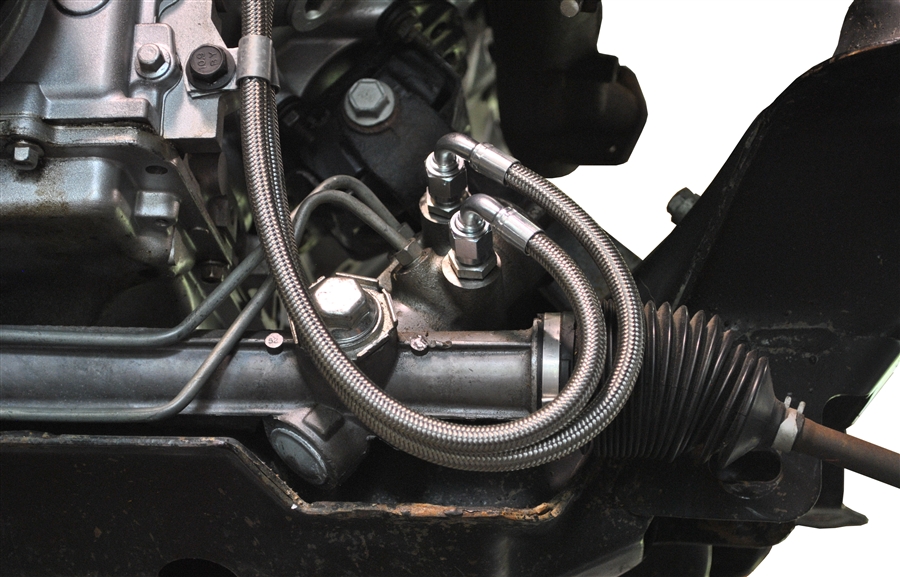
Steering Gear Housing
Last but not least, steering gear housing. It also depends on which type of power steering system, yet the mechanism is usually housed in the steering gear housing or within the rack housing.
And both of them can cause leaks. If the seals for the power assist piston are worn or old, they can leak easily.
Miles to Drive With Leaking Power Steering Fluid
Knowing how long one can drive is equally important as understanding the consequences of driving with a power steering fluid leak.
In this regard, there is no doubt that you can cover miles with the fluid in the power steering pump, even if it’s leaking. However, the situation can get worse damaging the pump, if there is no fluid in it.
To know more about this issue, explore the following list to keep you on the road.
Traveling Distance with Badly Power Steering Fluid Leak
In this case, topping off the fluid is necessary every time you cover a few miles as it keeps you driving indefinitely.
For instance, 14o z of fluid is added into the pump to drive for approximately 400 miles. However, if the level of the power steering fluid leak is not examined timely, it can drain completely.
Thus, leading to the more dangerous problem associated with the power steering rack.
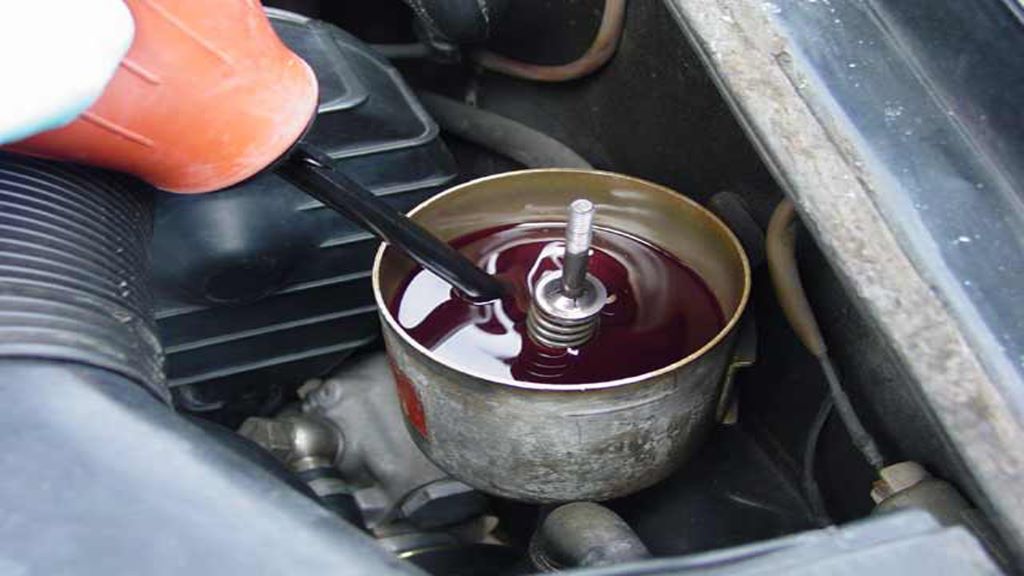
Once your car has leaking power steering fluid, it makes the driver feel as if the power steering has locked up. To add on, the noise from under the hood can also be heard while steering.
Furthermore, on curve or sharp bend roads, the power steering won’t respond well making it even more difficult to drive, especially in the mountainous area.
Traveling Distance Without Fluid In Power Steering Pump
Operating with a power steering pump that has no fluid in it can likely cause the pump failure in a few minutes only. One won’t be able to cover even the first hundred miles with a dried power steering pump.
Without the fluid, the power steering pump or rack can overheat leading to complete failure of the system. In addition to it, the serpentine belt would also seize by either snapping or coming off.
This will result in the loss of the alternator and water pump, too. And, if it’s not repaired timely, the head gasket can also break down.
What Can Happen If You Continuously Drive Your Car With Power Steering Fluid Leak
If you know your car has a problem that is a power steering fluid leak, there are some consequences that a power steering fluid leak causes to your car.
1. Wrecking the car
You lose power steering and you are not accustomed to driving without power steering. You may wreck your car.
It’s like your steering just locked up when it happens for the first time and if you happen to be in a curve you may not react well to it.
The percentage that you will be in a curve because a turned steering wheel is what will trigger this failure is high. This is especially pronounced at low speeds and can make steering extremely difficult.
Your vehicle’s instruction manual will outline the dangers of driving with no power steering fluid.

2. Losing power brakes
Since each model and brand is different, in some cars, when it loses the power steering, it also means losing the power brakes. They are still operable, but you will need to apply a lot more pressure on them.
3. Damaging the pump
The pump will be damaged if you continuously drive your car with a power steering fluid leak. Because the level of fluid is going to reduce gradually until finished, and your pump runs dry.
This causes increased friction and heat and can quickly cause expensive damage. If you need to drive your car with no power steering fluid, try to avoid extreme turns to the left or right, and replace your fluid as soon as possible.
4. Overheating
The next consequence of no power steering fluid is overheating that additionally acts as a coolant for that system is either your power steering pump or your steering rack.
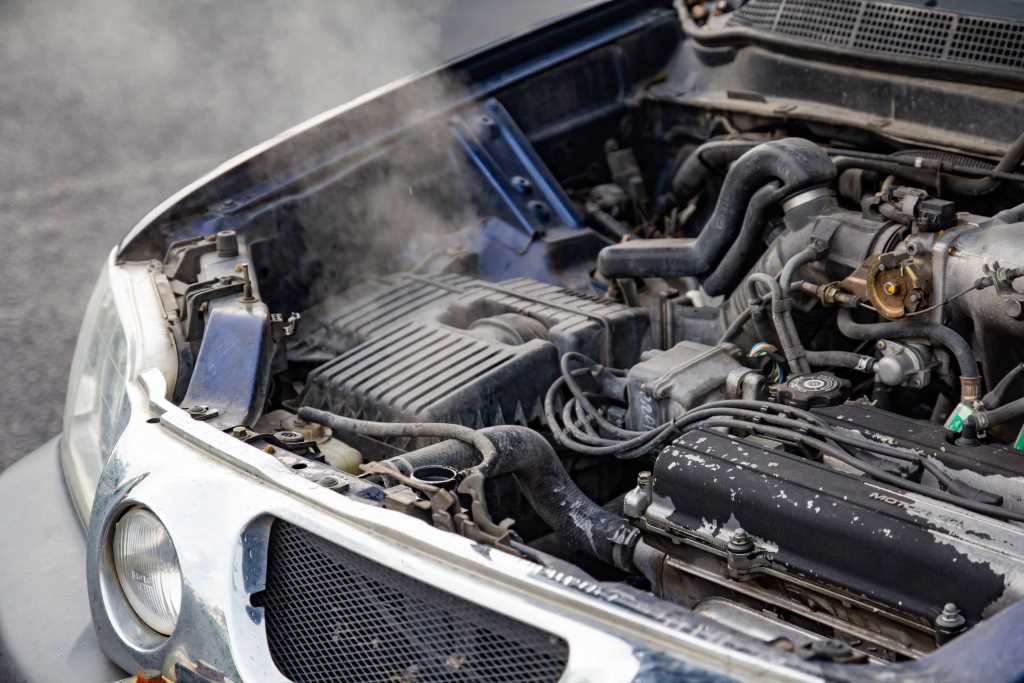
How To Fix The Power Steering Fluid Leak?
Now you know the reason why the power steering fluid leaks and the consequence of driving a car with a power steering fluid leak.
So how to fix power steering leaks? Yes, you should find where the leak is and fix it. There are 3 possible leaking places that you may find in your car.
1. Steering gear or rack
It is the most common location of a car leaking power steering fluid because the seals here are subject to the most road grime and dirt that can wear the shafts and seals.
The leak in the steering gear will be on the top of the gear where the steering column enters or at the bottom where the pitman’s arm is attached.
Another leak place is where the tie rods connect to the rack which causes power steering fluid leaking fast if your car is equipped with a steering rack.
If your car leaks here, you can use some power steering stop leak product. There are many different products in the market so go forward for one and fix your steering gear and rack.
2. Power steering pump
The leak would be at the point where the pump shaft exits the pump body and is connected to the pulley.
If you find a leak here, you will also find fluid dripping from behind the pump pulley. What you can do or the best thing you can do in this case is replace your power steering pump.
This is usually a relatively inexpensive maintenance item and these leaks can indicate future problems like bearing or pump failures.
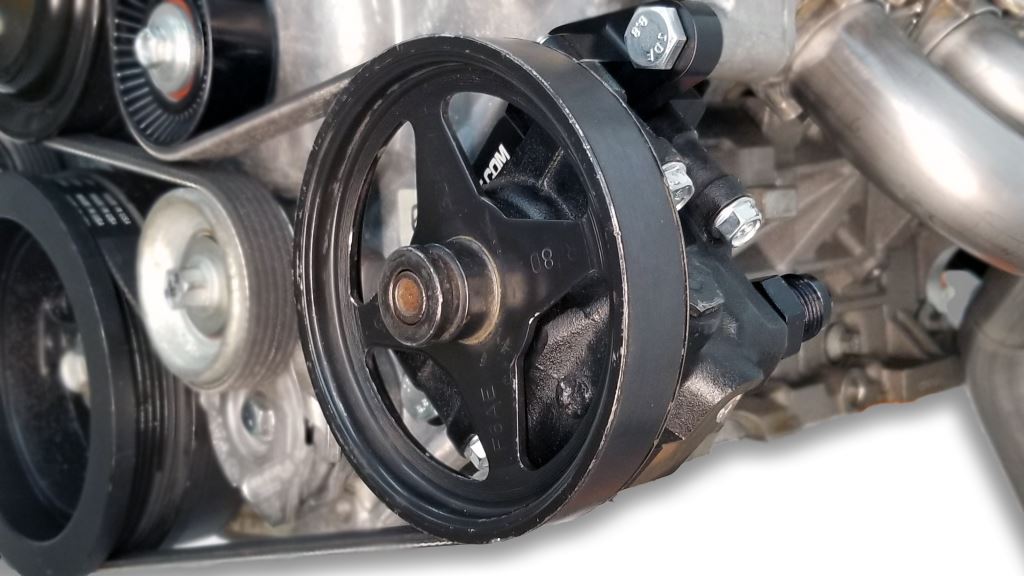
3. The hose or tubing
If the leak is not in the power steering pump, then you should check the hose and the tubing that carries the power steering fluid from the pump to your steering gear or rack.
Where a rubber hose transitions to a hard line or where a hard line screws into the rack or pump are the most common.
Many power steering systems are using a long hard pipe in the return line placed towards the front of your vehicle as a type of cooling system. It makes sure to inspect the full length of the hose and pipe.
So if you find a leak here, you can try tightening the connection or adding Teflon tape to the threads being careful not to let any tape enter the system.
But for a long time, we recommend you replace any leaked hose or tubing.
What Is The Cost To Repair Power Steering Leak?
In addition, you should be aware of the added-up cost of power steering leak repair. Repairing a power steering fluid leak often costs between $500 and $650.
The actual cost will be determined by the individual pieces that are failing. You may simply need to replace one component or the complete system.
Final Words
Leaking power steering fluid sometimes means losing the power steering and subsequently, the power brakes. However, as a driver, you can use brakes but this time, you will need to apply more force to them.
Finally, after knowing all about the failures caused due to the power steering fluid leak, the best thing you can do is take your car to the nearest service station for maintenance in case you do not know how to fix it by yourself.




I did not know that power steering fluid is also responsible for power braking. As a matter of fact I believe these are two completely independent systems. Can you please double check and report back? Thanks!
If the system has HYDROBOOST. Then yes it can cause brake failure as the power steering pump drives the boost for applying the power brakes. So if you lose the power steering fluid then no power assist for brakes. Very hard to apply brakes at this point they are manual. Very dangerous.
I DRIVE A TOYOTA CAMRY 2002 MODEL, I POURED IN THE POWER STEERING OIL AND IN VERY FEW HOURS THE ENTIRE OIL WAS LEAKING. PLEASE WHAT IS THE ACTUAL CAUSE BECAUSE THE STEERING IS VERY STIFF?
I’m not sure you can help me but I have a 2016 GMC Acadia with 42,000 miles. The other day when I turned my wheel I felt a weird grinding noise. I immediately brought it to the dealer that was less then a half mile from my house. They informed me that I needed a new hose because the power steering fluid was leaking. They replaced it and I paid for it. We didn’t even make it out of the parking lot because the car was shuttering and definitely way worse then when I left it there! Now they tell me I need a $1300 repair for a new gear. They are saying it’s my fault for driving it with the leak! Would the car drive worse after the leak was repaired? I feel like something isn’t right!
Thanks
Thats a ridiculous price especially if they want to keep you as a customer.
I had a garage charge me 750$ once and it still leaked . Ended up just being the hose which was 30$
My brothers truck had same problem. Found an honest guy that works probably for around 25 an hour
He replaced the whole power steering pump and assembly for 180$ and that includes labor .
If they want to charge you 1300$ thats more than 1,000$ profit they getting for probably an hour job .
1,000$ an hour for labor is ridiculous.
Thank you, Mr. Azuma, for your helpful article.
Perhaps you can help me understand whether a rack-and-pinon leak, which I understand can deplete the power steering fluid, is a coincidence vs. a secondary damage from unrelated repairs/problems?
Here is the back story:
Despite being the original owner of the car, my spouse was unaware at ~167,000 miles that the head gasket had begun to fail — apparently as a result of a flawed head gasket design on the part of Subaru. Despite taking the car to have the water pump, drive belts and crankshaft seals replaced — and to a Subaru dealer for sensor replacements less than three years prior — no one informed us about the ticking time-bomb head gasket issue.)
After the valves were serviced, head gasket, AC fan and cracked radiator were replaced, we drove approximately two hours at which point the timing belt shredded at highway speed and bent six valves.
The repair shop replaced the bent valves and belt. They say the timing belt tensioner, pulleys and pistons do NOT need to be replaced. Instead, they repaired a stripped out bolt in the drive belt assembly that they say was responsible for allowing the timing belt to shred. Upon trying to drive away after the valve replacement, there was a high-pitch noise on acceleration and the feeling of the car being under too much load when accelerating. (The engine passed a compression test after the valves were replaced so our own impression was that of a bad bearing or tensioner but, again, the shop says those parts do not need to be replaced.)
Only after the second of two successive major repairs were we told the rack-and-pinion has a leak. This is puzzling because we have had less than 24 hours of access to our car in a seven week period.
The shop is blaming this on the age of the vehicle (coincidental problem). However, we had the transmission and motor mounts replaced at the same time the valves and the gasket were done. Surely if it had been leaking beforehand we would have been told because last year we had the alternator, power steering pump, axle and rack-and-pinion boot replaced. In short, many people have had an opportunity to inform us if there were such a leak.
The shop wants more money to replace the rack-and-pinion assembly due to this leak. Should we consider this a coincidence and pay them for this repair — or is the leak a possible sign of damage that occurred during the process of accessing and replacing bent valves and a shredded belt? Also, how should we deal with our contention that there may be a bad bearing or failing hydraulic properties in the belt tensioner that could have contributed to the burning odor and the high-pitch noise we heard on acceleration? The shop is blaming the burning/smoke on the rack-and-pinion leak. My fear is that it could signal a condition that will result in the belts breaking a second time in a row. What should we do?